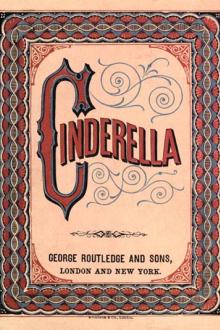The Phantom of the Opera by Gaston Leroux (most interesting books to read txt) 📕

Read free book «The Phantom of the Opera by Gaston Leroux (most interesting books to read txt) 📕» - read online or download for free at americanlibrarybooks.com
- Author: Gaston Leroux
Read book online «The Phantom of the Opera by Gaston Leroux (most interesting books to read txt) 📕». Author - Gaston Leroux
"Its novel conception, perfect fitness, and rare splendor of material, make the grand stairway unquestionably one of the most remarkable features of the building. It presents to the spectator, who has just passed through the subscribers' pavilion, a gorgeous picture. From this point he beholds the ceiling formed by the central landing; this and the columns sustaining it, built of Echaillon stone, are honeycombed with arabesques and heavy with ornaments; the steps are of white marble, and antique red marble balusters rest on green marble sockets and support a balustrade of onyx. To the right and to the left of this landing are stairways to the floor, on a plane with the first row of boxes. On this floor stand thirty monolith columns of Sarrancolin marble, with white marble bases and capitals. Pilasters of peach-blossom and violet stone are against the corresponding walls. More than fifty blocks had to be extracted from the quarry to find thirty perfect monoliths.
"The foyer de la danse has particular interest for the habitues of the Opera. It is a place of reunion to which subscribers to three performances a week are admitted between the acts in accordance with a usage established in 1870. Three immense looking-glasses cover the back wall of the FOYER, and a chandelier with one hundred and seven burners supplies it with light. The paintings include twenty oval medallions, in which are portrayed the twenty danseuses of most celebrity since the opera has existed in France, and four panels by M. Boulanger, typifying 'The War Dance', 'The Rustic Dance', 'The Dance of Love' and 'The Bacchic Dance.' While the ladies of the ballet receive their admirers in this foyer, they can practise their steps. Velvet-cushioned bars have to this end been secured at convenient points, and the floor has been given the same slope as that of the stage, so that the labor expended may be thoroughly profitable to the performance. The singers' foyer, on the same floor, is a much less lively resort than the foyer de la danse, as vocalists rarely leave their dressing-rooms before they are summoned to the stage. Thirty panels with portraits of the artists of repute in the annals of the Opera adorn this foyer.
"Some estimate ... may be arrived at by sitting before the concierge an hour or so before the representation commences. First appear the stage carpenters, who are always seventy, and sometimes, when L'Africaine, for example, with its ship scene, is the opera, one hundred and ten strong. Then come stage upholsterers, whose sole duty is to lay carpets, hang curtains, etc.; gas-men, and a squad of firemen. Claqueurs, call-boys, property-men, dressers, coiffeurs, supernumeraries, and artists, follow. The supernumeraries number about one hundred; some are hired by the year, but the 'masses' are generally recruited at the last minute and are generally working-men who seek to add to their meagre earnings. There are about a hundred choristers, and about eighty musicians.
"Next we behold equeries, whose horses are hoisted on the stage by means of an elevator; electricians who manage the light-producing batteries; hydrauliciens to take charge of the water-works in ballets like La Source; artificers who prepare the conflagration in Le Profeta; florists who make ready Margarita's garden, and a host of minor employees. This personnel is provided for as follows: Eighty dressing-rooms are reserved for the artists, each including a small antechamber, the dressing-room proper, and a little closet. Besides these apartments, the Opera has a dressing-room for sixty male, and another for fifty female choristers; a third for thirty-four male dancers; four dressing-rooms for twenty female dancers of different grades; a dressing-room for one hundred and ninety supernumeraries, etc."
A few figures taken from the article will suggest the enormous capacity and the perfect convenience of the house. "There are 2,531 doors and 7,593 keys; 14 furnaces and grates heat the house; the gaspipes if connected would form a pipe almost 16 miles long; 9 reservoirs, and two tanks hold 22,222 gallons of water and distribute their contents through 22,829 2-5 feet of piping; 538 persons have places assigned wherein to change their attire. The musicians have a foyer with 100 closets for their instruments."
The author remarks of his visit to the Opera House that it "was almost as bewildering as it was agreeable. Giant stairways and colossal halls, huge frescoes and enormous mirrors, gold and marble, satin and velvet, met the eye at every turn."
In a recent letter Mr. Andre Castaigne, whose remarkable pictures illustrate the text, speaks of a river or lake under the Opera House and mentions the fact that there are now also three metropolitan railway tunnels, one on top of the other.
End of Project Gutenberg's The Phantom of the Opera, by Gaston Leroux





Comments (0)